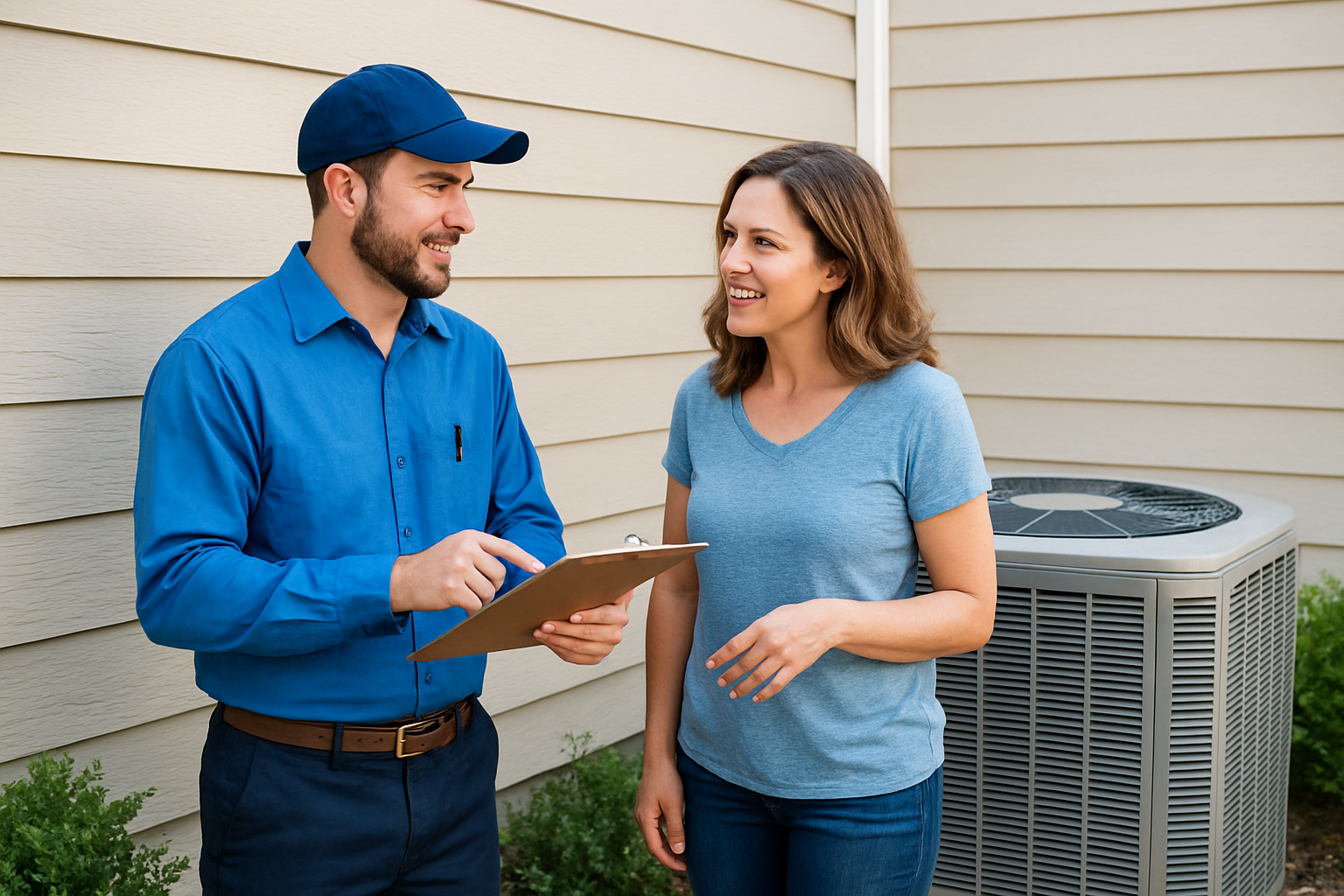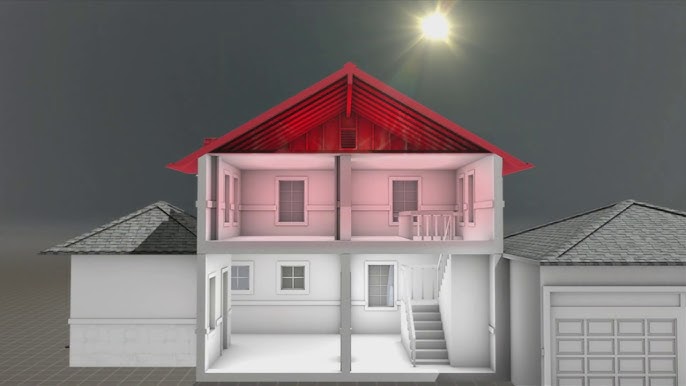
Gas Furnace Components You Should Know
You know your furnace keeps you warm when outdoor temperatures drop. Do you know how your furnace operates? Most homeowners may not be familiar with furnace anatomy or how it works. There are many gas furnace components that work together to deliver heat to your living areas. Understanding furnace anatomy may not help you fix it on a day it is not working, but it will help you make an informed decision on what is best for your home when faced with repair vs replacement. In this article we discuss the different gas components to help you become more familiar with your furnace.
Return Register
A return register may look like your other air vents but is typically larger in size than the others. They are usually located in a hallway ceiling. It is the part of your HVAC system where air returns to your furnace to be heated and how air is recycled in your home via the return duct.
Air Filters
We often discuss air filters, although a small part of your HVAC system they have a huge impact. When air is brought in through the return register it passes through the air filter. The air filter is responsible for catching dust and other contaminants before they reach your HVAC system and being redistributed through your home. Check your filter often and replace as needed.
Blower
The blower is a large component that blows air through your HVAC system and into your home through the supply ductwork. They can be electric or powered by a belt, often times if you hear a loud noise coming from the area it is due to a blower malfunction.
Blower Motor
The blower and the fan in the blower are powered by the blower motor. The blower motor capacitor starts up the blower motor and keeps it running. Without the blower motor, the air would not make it far out of your system. Both the blower and blower motor are housed in the blower chamber.
Burners
The burners are where the fire comes from. The burners are responsible mixing gas and air to make the flame the furnaces heat source. They pull gas from a gas line to make fire once mixed with oxygen. They usually consist of the flame sensor, as well as pilot light or electric ignition to start the fire.
Flame Sensor
The flame sensor is a safety device that detects heat from the hot surface ignitor. It will do nothing if everything is working properly, but it will shut the system down if no heat is detected to avoid any potential gas leaks.
Pilot Light/Electric Ignition
In older furnaces the pilot light is a small flame that burns constantly ready to ignite the gas when the furnace is turned on to start the heating process. Whereas newer furnaces will have an electronic ignition. With an electronic ignition your system will send a signal to the electronic ignition and in turn the electronic ignition will send a spark to the burner.
Gas Valve
The gas valve adjusts the pressure of the natural gas coming into your home. It is also responsible for controlling the gas to the furnace.
Burner Cover
A burner cover is the component that sits over the burners, flame sensor, blower chamber and electronic ignition or pilot light. It is a safety device that keeps the flames inside the furnace.
Heat Exchanger
The heat exchanger is the component that heats the air, the core of your gas furnace. Natural gases and fire are burned together to create heat, but the mixture also generates what are called combustion gasses such as carbon monoxide. The heat exchanger is responsible for keeping these toxic fumes separate from the air distributed throughout your home. A heat exchanger should be inspected on a regular basis as a cracked heat exchanger is severe safety hazard.
Pressure Switch
The pressure switch ensures the draft inducer motor is on and pushes the harmful gases out the flue pipe. It uses a small diaphragm that pulls in when the inducer motor is on, resulting in a vacuum. If a vacuum is present and the diaphragm can pull it, a switch is activated that allows gas to flow. If the vacuum is not sensed, no gas will be allowed to enter the furnace.
Limit Switch
The limit switch detects the furnace temperature. If the furnace is too hot, the limit switch will turn off the gas to prevent any safety issues.
Supply Plenum, Duct and Register
The supply plenum is the gas furnace component that sits above your furnace and receives heat treated air from the heat exchanger and then prepares to send it back to your home through the supply duct and supply registers.
We hope this article helped you better understand your HVAC system! When you need an expert for your heating and air conditioning needs, our team is ready to help. We are proud to serve communities throughout the San Fernando Valley and Los Angeles, including Woodland Hills, Simi Valley, Thousand Oaks, Burbank, and Northridge. If you live in or near any of these areas, contact us today for reliable service.
Common FAQ's about Furnaces
Why does my furnace keep shutting off after 1 minute?
- During the process of starting up, the ignitor ignites and the gas valve opens and allows gas to flow through. The flame sensor is the next critical part, its job is to make sure that there is a flame inside when gas is flowing to prevent gas being released without burning. This whole process usually will happen 4-5 times depending on the brand and the blower will start up to circulate air to prevent explosion. There are a few parts that could be bad that may cause this issue. The ignitor, flame sensor, or gas valve could all be the reason why the furnace keeps shutting off after a couple minutes. If you want professional assistance and expertise when diagnosing and fixing this issue, schedule a service call today for $79 special.
Why do I have a gas smell near furnace
- A possible reason for a gas smell near the furnace is if the ignitor has lost its strength over time and is not able to ignite the gas right as it comes. If this is the case the ignitor needs to be checked and inspected due to the possibility of gas leaking out of the furnace. Another reason for a gas smell coming from near the furnace if the gas valve is leaking, this can be caused due to wear over time, or if something disconnected the pipes from each other. If you want a professional inspection and service call to diagnose your furnace. Contact our 5-star reviewed team today to lock in your special $79 service call fee!
Why is my furnace blowing cold air
- The main reasons include different types of ignition failure: which can include flame sensor failure, ignitor failure, and gas valve failure. Not only if the gas valve has been disconnected another reason can be the meter's earthquake protection may have been triggered which may cause the gas shutoff to be activated causing there to be no gas coming from the pipe. If you want a professional inspection and service call to diagnose your furnace. Contact our 5-star reviewed team today to lock in your special $79 service call fee
Contact LA Construction, Heating and Air
Now you have more information about the different gas furnace components. If any parts of your system are not properly functioning, give us a call today at 818-341-3406 or contact us online. We are proud to serve and work with all residents and businesses in Los Angeles and the surrounding areas. We provide heating and furnace repair to areas around Los Angeles as well, including but not limited to: Northridge, Thousand Oaks, Woodland Hills, Encino, and Burbank.
If you have any questions for your property call us today to schedule your service!
Furnace Anatomy Related Posts:






































